Today is the 30th anniversary of the release of The Running Man, a movie that asks what a Philip K. Dick story would look like if it had been made by a Joel Silver type. It’s ultimately a mid-tier Arnold Schwarzenegger movie in terms of notoriety, but also one which is undergoing a certain re-appreciation as of late, especially as its vision of a future ruled by reality TV has sadly come to pass. Here’s the story of how it got made.
George Linder – proud owner of the country’s largest supplier of lightweight wheelchairs – first came across The Running Man in an airport bookstore in 1982. He’d never heard of Bachman nor did he have any reason to question his identity. He simply thought he’d found a good book. I mean, just look at that tagline: “Welcome to America in 2025, when the best men don’t run for President; they run for their lives.”
It’s not exactly Shakespeare, but it’s exactly the trashy page-turner you want at an airport. Linder couldn’t stop imagining the tagline being read by Don “In a World” LaFontaine over a movie trailer, to the point he decided he needed to make the movie himself. As he told Cinefantastique, “I contacted the author’s agent and was a bit taken aback to learn that he was asking a comparatively great deal of money for the option of a book which had less than 100,000 copies in print. I mean, who had ever heard of ‘Richard Bachman’?”
Meeting Mr. Bachman’s Dark Half
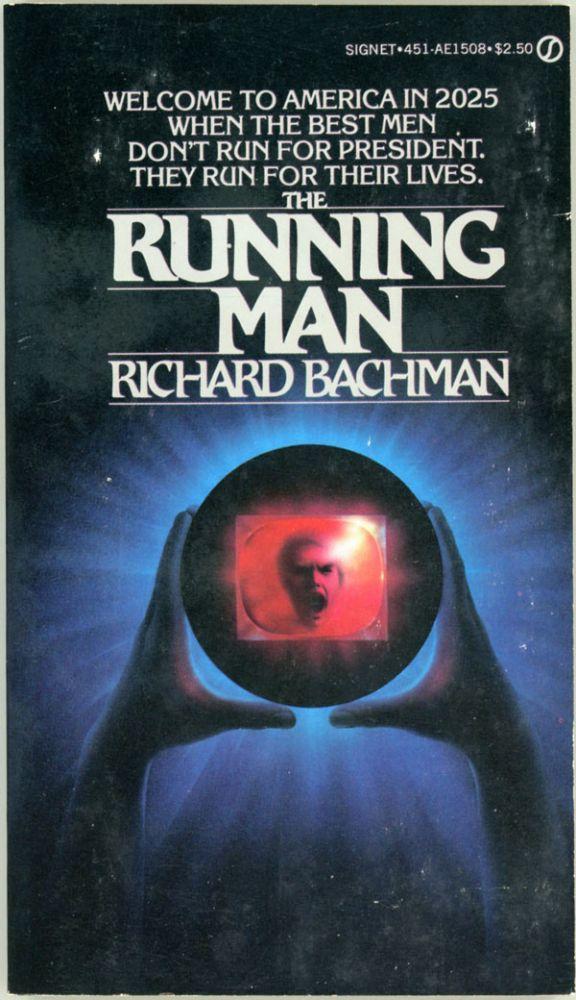
Bachman was simply a random author who seemed to jump from one theme and genre to another, tackling school violence (1977’s Rage), Philip K. Dick-like dystopias (1979’s The Long Walk, 1982’s Running Man), and a Steinbeckian conflict between man and government (1981’s Roadwork). If the publisher overvalued his work that was their problem, but Linder couldn’t walk away. Running Man had a hold of him. So, he agreed to the publisher’s $20,000 up-front payment with a built-in bigger bump down the road should the film actually get made.
Next, he surveyed the Hollywood landscape to find the right partners. Linder’s search led him to Rob Cohen and Keith Barish, who were then in the process of setting up a slate of ten big-budget genre pictures through their new company, Taft/Barish. Cohen had a decade of experience as a studio executive at Fox TV and Motown Production as well as several years as a producer and TV director; Barish had just earned his first producing credits, most notably for ‘81’s Endless Love and ‘82’s Sophie’s Choice.
“When [Linder] took it to them,” Running Man’s screenwriter Steven de Souza recalls, “Cohen said, ‘Boy, you made a lousy deal. Why is the second payment [on the option] so high?’ That’s when they realized it was Stephen King.”
Look, it’s 2017, and you’re reading an article about the making of Running Man. You probably already know Richard Bachman is just Stephen King’s pen name for his more off-brand works. But that little nut wasn’t cracked until 1985 when a DC bookseller put the two together. Until then, it was one of the publishing world’s biggest secrets. Linder, Cohen, and Barish genuinely had no idea what they had until the publisher had to tell them. As Linder put it, “I felt like I’d found a Rembrandt in K-Mart!”

Cohen agreed, admitting he eventually bought Linder’s pitch “with the understanding that we could use King’s name on the advertising.” However, few Stephen King movies scrape by without some friction between the author and his adapters, and once he saw what they’d done to his story he forbid them from using his name, telling Cinefantastique, “It was totally out of my hands. I didn’t have anything to do with the making [of the movie]…it doesn’t have much in common with the novel at all, except the title.”
Of course, by the time of the film’s release in 1987 the Bachman/King ruse was no longer a secret, but not everyone knew about it yet and among those who did some still found it confusing. So, slapping “Richard Bachman” on a movie poster didn’t mean as much as “Stephen King.”
Since When Does an Everyman Look Like Arnold Schwarzenegger?
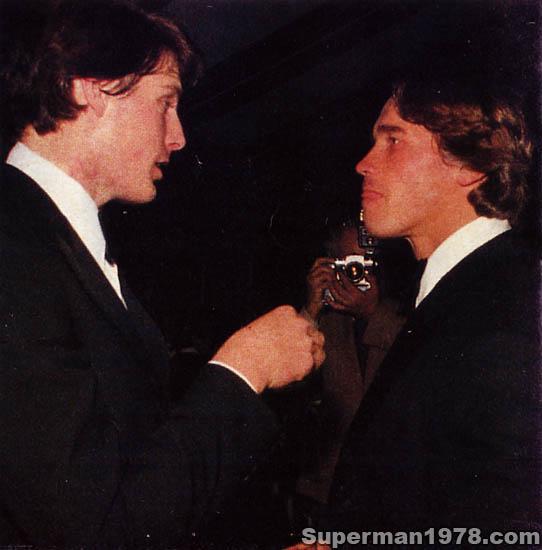
If King had actually been involved in the making of the movie he undoubtedly would have lobbied for the casting of literally anyone other than Arnold Schwarzenegger to play the lead. The Ben Richards of the book is a malnourished everyman with a sick child and wife turning tricks to get medicine. Due to the worldwide economic depression, he can’t get work and has to go on the Running Man show as a last resort to hopefully save his family. That’s about “as far away from the Arnold Schwarzenegger character in the movie as you can get,” King would later say.
Yeaaaaaahhhhh, Arnold doesn’t really do “everyman.” No one who looks and sounds like that can. They tried to cast someone who could, originally looking at (and possibly even officially casting, however briefly) Christopher Reeve. But Arnold brought with him a worldwide appeal which could help secure a budget through foreign pre-sales.
So, as de Souza put it: “I didn’t have to destroy King’s vision, but instead tailor the movie to Arnold like a suit.” Thus, Ben Richards became a disgraced former law enforcer with a tendency toward puns, a love of cigars and no wife and kid tying him down. It’s antithetical to the original intent, but so was turning the Terminator from an anonymous infiltration device to a physical specimen who stands out in any crowd. Look at how well that worked out for everyone, or so the thinking probably went.
At this point, the budget was set at $10m ($5m less than what Predator was made for that same year, btw). It would eventually grow to $27m, $5m of which went to covering Arnold’s salary. Linder eventually had to sell his wheelchair company to cover the overages.
King’s version of the Running Man needed some pizazz.
While Linder, Cohen, and Barish set about pulling the money together, de Souza, who came to the project from Commando and 48 Hours and would later co-write Die Hard, kept pecking away at the script. His biggest challenge, the part where he had to create entirely new material unrelated to King’s novel, was in the Running Man show itself.
“The game show portion in the book, the studio portion is like 5 pages,” de Souza told an Alamo Drafthouse Los Angeles audience during a post-screening Q&A earlier this year. “The host is a different guy from the producer. The producer’s really the prick. But the game show in the book is like a 1950s game show. Ever see reruns of You Bet Your Life with Groucho Marx? That’s what the game show is like. There’s a guy with a microphone, and a girl comes out with a box around her neck. The runners pick an envelope, and that gives you a head start, 10 minutes or 20 minutes.”
Hardly cinematic, especially considering all the bells and whistles employed by actual mid-80s game shows of the time like Wheel of Fortune and the $10,000 Pyramid. They needed a Running Man that looked more like something people would actually watch, yet The Running Man in King’s novel is a month-long program that airs every night. On top of that, the show isn’t even live since the contestants tape themselves and mail the tapes back to the network at the end of every day. Moreover, the stalkers are nondescript assassins embedded in the everyday world, meaning anyone at any time could be the person who kills you. A terrifying scenario, but one the runners voluntarily sign up for.
All of that had to go. The Running Man needed to be a grotesque, but believably slick and entertaining affair, marrying the production trends of the late 80s and the dystopian ideas of Rollerball and Death Race 2000 with the bloodlust of the Roman Coliseum. Participation in the game also needed to be punitive, not voluntary, to up audience sympathy for the unjustly accused hero. So, de Souza, who’d started his career working in television, did his best to imagine what TV of the future would look.
But he wasn’t exactly the first to do so. There had already been German (1970’s Das Millionenspiel), French-Yugoslavian (1983’s The Price of Peril) and Italian (1983’s Endgame) films which toyed with the notion of a future dystopia where the pacified masses tune in to watch people kill each other on TV shows that look oddly like what we would now call reality TV. Whether de Souza was aware of any of that is unclear. He says he simply thought up the craziest things and WWF-style villains possible while also making sure to remember he was already living in a very strange world since an actor, Ronald Reagan, had become President, thus the “President’s agent” joke in the movie.
The original director wanted to lean harder into the dystopia of it all.

Greco-Italian director George Pan Cosmatos had made two movies since relocating to America, the first a horror film (1983’s Of Unknown Origin) which came and went, the second a little thing called Rambo: First Blood Part II (1985). The huge success of the latter got him the Running Man gig.
Once on board, he pushed even harder into the totalitarianism of the plot and made the love interest (eventually played by Maria Conchita Alonso) a revolutionary who teaches Richards and opens his eyes to the need for action. Mostly, though, he sorta made it more like Rambo. As de Souza recalls:
“Cosmatos’ family suffered under the Nazi occupation in Greece. In the draft I did for George, there were roundups, there were concentration camps. He went way into that. His vision was that the 1% people lived in a complete biodome. He wanted to film all the upscale scenes in the Edmonton Mall, the biggest shopping center in the world at that time. So we were going to shoot in Canada and we scouted it. When [Richards] broke out of the city, there was going to be a river raft chase. I think he was just trying to get the movie back in the wilderness where he had done Rambo. He wanted the whole chasing part of the game to be in the wilderness.”
This script was budgeted at $27m. When the producers demanded cuts to make it shootable on an $18m budget Cosmatos walked. Or at least that’s the story de Souza tells now.
Rob Cohen told Alan Jones of Cinefantastique, Starburst and Radio Times a different story back in the 80s: “[Working with Cosmatos was] the worst experience I’ve ever had in the business. [He] was the least talented, least cooperative and the most horrible person I’ve ever had dealings with. We fired him after spending $700,000 on the picture.”
He would not be the last director fired from the movie.
For a minute they almost went Truman Show with it.

Alex Cox and Carl Schenkel were each approached about becoming Cosmatos’ replacement. Cox couldn’t make it work with his schedule since his work on Repo Man (‘84) had lined up Sid & Nancy (‘86), Straight to Hell (‘87) and Walker (also ‘87) in quick succession. Schenkel, a German director still looking to make his North American directing debut, was only involved with the production for two weeks before bowing out for fear of biting off more than he could chew.
So, Cohen decided to move on to Ferdinand Fairfax, a Brit with one movie to his name but several TV shows. Given that work history, perhaps it’s not surprising Fairfax’s pitch was to do what Peter Weir would later do with the first half of The Truman Show and simply make the show-within-the-movie, i.e., the actual Running Man broadcast, the movie.
“[Fairfax] had an interesting idea that the movie should be the actual broadcast, which would have had some narrative problems because how did [Ben Richards] get in trouble and stuff like that,” de Souza said. “He was making it very British. He said on an English crew, you have a tea lady who comes around with a cart of tea and biscuits. When the tea lady came through, the show stopped the crew stopped, the stalker stopped and the runners stopped and they all took a break, then started up again. It was kind of a Monty Python bridge too far. Before you could say, ‘What is the capital of Assyria?’ he was gone.”
Then they fired the director a week into filming.

They finally found their man with Andrew Davis, a longtime cinematographer who had recently branched out into directing, helming a forgotten slasher flick (The Final Terror) and one of the apparently good Chuck Norris movies (Code of Silence). Movies like Above the Law, Under Siege and The Fugitive were still in his future. Running Man was the next step up for him in his career.
It started off well. He worked with de Souza to undo all of the eccentricities Fairfax and Cosmatos had brought to the script. He handled pre-production duties, saw to the hiring of Paula Abdul to choreograph the dance numbers, the casting of Mick Fleetwood and Dweezil Zappa to play revolutionaries, Richard Dawson to play Killian, and generally got the movie ready to film by its September 1986 start date. Once that date came, they spent the first three days filming the prison break. Sometime after that, they shot the ice rink battle.
Then he was fired.
Wait. What went wrong?
Everything, apparently. They were only eight days into the shoot, and Davis was already $8m over budget. Cohen’s patience was wearing thin, and it disappeared entirely when he watched the dailies for the ice rink sequence.
As de Souza explained:
“In a meeting earlier, Andy said, ‘Listen, I have a great idea. At the end of the movie, when they break into the studio, they’re cornered. They’re trapped. Then Arnold reaches into his pocket and takes out one of the exploding hockey pucks, throws it and kills the guards. Rob and I look at each other and he says, ‘That makes Arnold pretty shitty. He had this thing in his pocket for the whole movie where the whole supporting cast is getting killed and he uses it to save his own ass. We’re not doing it.’ Then he’s behind schedule several days. He shot and improvised that scene and had Arnold pocket one of the hockey pucks.”
Cohen showed the footage to de Souza and Schwarzenegger in a “we’ve got a problem; what do you want to do about it?” emergency meeting. However, Schwarzenegger claims the actual decision to fire Davis was made without consulting him and transpired when he was away from set promoting a bodybuilding competition. When he came back, he was incensed and now concludes, “With such a terrific concept, Running Man should have been a $150 million movie. Instead, it was totally screwed up by hiring a first-time director and not giving him enough time to prepare.”
“First-time director”? Who is he talking about?
Starsky to the rescue.

By the early 80s, Paul Michael Glaser, aka Starsky from Starsky & Hutch, was in the process of transitioning away from acting and over to directing. He’d already turned some heads with his steady hand behind the camera of several Miami Vice episodes, crossing paths with Cohen who also directed a couple of early Vice episodes. Michael Mann, who knew both of them from his time writing for the show, suggested Glaser as the obvious answer to Cohen’s Running Man problem. His reasoning: Glaser’s vast experience in TV had prepared him to simply come in and get the job done on time according to the producer’s wishes.
Which is exactly what happened. Given little more than two days to prepare and no real authority to offer substantive notes on the script, Glaser steadied the ship and got Running Man done. He later told Cinefantastique, “Directing is basically problem-solving. When you come into something in the middle like I did, your problem solving goes up about 300%.”
All told, the shoot took 61 days and finished $17m over budget.
Don’t confuse test screen audiences. They don’t like that.
This is how the film ends, but it’s not how it was originally sequenced:
One of the many things Running Man is praised for predicting is the rise of the type of technology that makes it possible to digitally manipulate footage and easily fool audiences in the process. Of course, we now live in a world where Peter Cushing can be digitally recreated in Rogue One two decades after his death and Kevin Spacey can be digitally replaced in a movie six weeks before its release date. But that kind of thing was still a new idea in ’87.
It’s one which Cohen and de Souza only thought of because an effects company came to them with the offer to use “synth thespians” for the film’s most dangerous stunt scenes. The technology wasn’t quite there yet, though. An actor’s head had to be perfectly still for it to work. That wasn’t feasible for an entire film, but if the tech was this close in ’87 imagine what Killian can do with it in 2019. This gave Cohen the chance to execute the kind of fake-out twist ending he’d so loved on his first big movie, The Sting. Moreover, what if they fooled not just the in-studio audience watching The Running Man show but all of us watching the movie as well?
“As written and as shot,” de Souza recalls. “The scene where Jesse Ventura kills them both was presented to you as if it were real.” So, right around the time you’re thinking “Holy shit! Did they just really kill off Arnold?” it cuts to Alonso and Arnold watching their own deaths in disbelief from the Revolution’s underground headquarters. Then we see the scenes of Killian and his digital artists doctoring the footage, helping us understand what we just watched.
They ran that version of the film, albeit in a rough cut with unfinished effects and some of Arnold’s lines ADRed by de Souza himself, in front of a test screening audience of 700 randomly selected Palm Springs residents and tourists and watched from the back when the big moment came. As expected, the audience reacted exactly as the in-studio audience does in the film: stunned silence (he just broke Maria’s neck!) followed by screams for bloody murder (yeah, get him Arnold!) followed by yet more stunned silence (maybe that spike through Arnold’s skull is a mere flesh wound?).
The problem was once you trick an audience like that you risk losing some of them either to confusion or resentment. Plus, exposing it to them in an unfinished format with crucial effects shots missing only enhanced the confusion, though not significantly. Less than 2% of the surveyed test screening attendees said they didn’t understand how the people in the movie were fooled by the swerve, but that was enough to make the producers nervous. So, the scenes had to be resequenced to make sure we know the big twist before the audience watching the Running Man show does.
Damn you, Predator!
Even with its various delays and protracted pre-production period, The Running Man was finished in time for a summer 1987 release. Little problem: so was another Arnold movie (Predator) from a rival company (Fox).
Tri-Star was comfortable with potentially competing against Predator or at least somewhat overlapping with it, but Arnold wanted no part of that, especially given his low opinion of Glaser’s work. So, he exercised a clause in his contract to force Tri-Star to delay the release and give Predator a wide berth.
The Legacy
That was the right choice, financially. Predator made more money and got better reviews, turning Running Man into more of an afterthought snuck in-between Arnold’s big box office breakthroughs – Predator and Twins. Not that Running Man went by unnoticed. Roger Ebert, for one, seemed to at least mildly appreciate the film’s charm, reserving particular praise for Dawson’s performance:
“Playing a character who always seems three-quarters drunk, Dawson chain-smokes his way through backstage planning sessions and then pops up in front of the cameras as a cauldron of false jollity. Working the audience, milking the laughs and the tears, he is not really much different than most genuine game show hosts – and that’s the movie’s private joke.”
Others were quick to criticize the film for, as Monthly Film Bulletin put it, “providing exactly the same kind of violent spectacle that it criticises Killian for manufacturing and twenty-first-century audiences for watching.”
Off Running Man went, consigned to a future on home video and cable, destined to be loved by 12-year-olds and then somewhat mourned by those same kids when they grew up and watched the film again and wondered how they hadn’t noticed how silly it all looks. Schwarzenegger, for his part, devoted a mere 2 pages of his autobiography to the making of the movie. Here in 2017, he’d much rather take about Predator‘s 30th anniversary than Running Man’s.
But beneath Running Man’s junk cinema exterior lies a sea of genuinely good idea, and in recent years it has been the subject of critical reappraisals by FilmSchoolRejects, The AVClub, and DenOfGeek, among many others. It was even used as the centerpiece of an early 2000s academic documentary about the artifice of reality TV, somewhat ironic since Alonso and Schwarzenegger have each had their own stints as reality show hosts by now. The Running Man concept, minus all of the killing, of course, was even adapted into a reality show called The Runner last year (to say nothing of Japan’s own long-running Running Man reality show):
The BBC, Vice, and The Atlantic all took the occasion of Trump’s inauguration to look back at Running Man‘s version of 2017, lamenting the number of similarities they found. de Souza is right there with them, telling Vice he’s most distressed by the one major thing he got wrong (other than there being a pyramid in LA and the world still using cassettes): “The biggest downer of this movie is the idea that when the video tape surfaces showing that Killian has lied, everyone is instantly outraged and rises up. Apparently, it doesn’t work that way. We’ve heard the tapes and seen the tapes, and it’s had no effect. In real life, everyone goes right back to Facebook.”
In real life, problems aren’t solved by puns, no matter how hard Schwarzenegger sells: “Hey, Killian, here’s your Subzero, now plain zero.” But to be discussed with any degree of relevance and reverence thirty years later is pretty good for a movie which nearly tripled its budget and went through 4 directors, one of whom was fired a week into filming.
BOX OFFICE
- BUDGET: $27m
- OPENING WEEKEND: $8m (stayed #1 for two weeks)
- TOTAL GROSS: $38m domestic
- CONTEXT: By the late 80s, all of Arnold’s starring movies (not counting Hercules in New York) had grossed at least $30m except for 1986’s Raw Deal, which was his first true flop (just $16m total). Then he hit a career-high with 1987’s Predator, which grossed the equivalent of $136m at today’s ticket prices and finished its run as the 12th highest grossing film of the year. If not for that, Running Man could have been seen as a nice rebound from Raw Deal into something which performed more according to his career average. However, given Running Man’s proximity to Predator as well as its out-of-control budget it went down as a box office disappointment.
- INFLATION: At 2017 ticket prices, Running Man’s domestic total converts to $86m, which is Terminator: Genisys ($89m)/Blade Runner: 2049 ($88m) territory for today’s sci-fi.
Sources: I Was There Too, Creepshows: The Illustrated Stephen King Movie Guide, BoxOfficeMojo, Arnold’s Autobiography



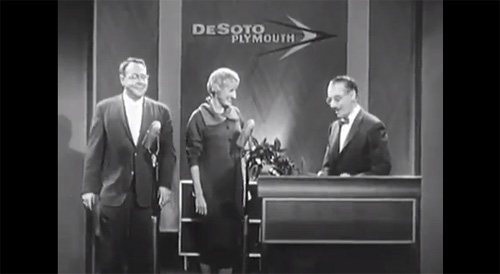
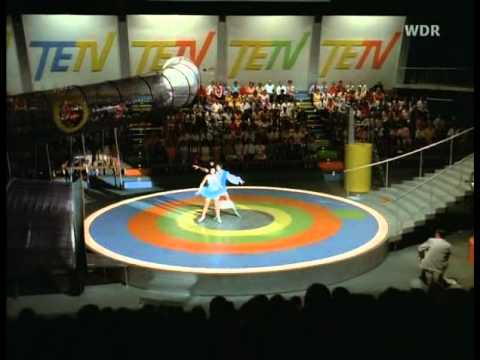
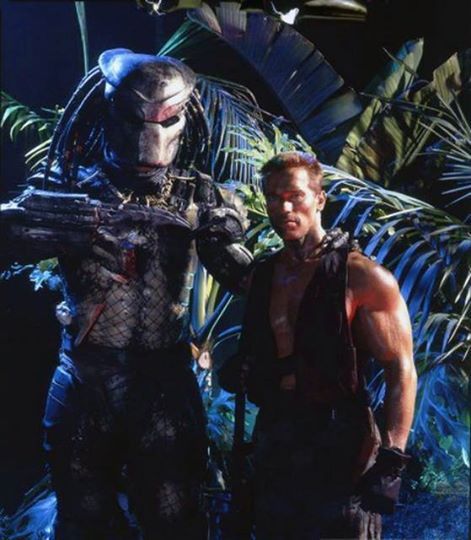
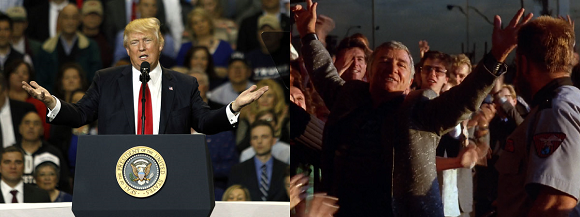
Yeah…a great idea. WHICH HAD ALREADY BEEN DONE AT THIS POINT!!!!
https://en.wikipedia.org/wiki/Das_Millionenspiel
This is the original movie based on the original story about the concept (which happens to predate King’s take) and if you know both movies it is pretty obvious that someone in the Running Man production knew Das Millionenspiel. Honestly, I wouldn’t be surprised if they actually wanted to make the remake and just picked up Kings story because this way they could get away with making their own version without having to buy any rights while also attaching King’s name to the project (which is just better known than Sheckley).
I actually enjoy Running Man quite a lot, but it gets way too much credit, especially if you consider that Das Millionanspiel was more than just a TV movie, it was the German War of the World moment. Which only added to the point it made about the influence of the media.
Let’s think this through:
Das Millionespiel was only ever broadcast twice before legal complications caused it to be dropped from TV for more than 30 years. The Sheckley source story was again adapted into a French-Yugoslavian film released in 1983. Stephen King, in his various books on writing, has said he wrote Running Man in a single week in 1981. It was published in ’82. Italian porn and horror director Joe D’Amato releases something with a similar plot in 1983. He calls it Endgame.
George Linder options King’s book probably in ’82 or ’83, and they’re up and running with a director and possibly Christopher Reeve attached to star in ’85. In the merry-go-round of directors, they start off with a Greco-Italian man who had spent a decade making movies in Italy before jumping to North America in the early 80s, approach a British director who was too busy, spent two weeks talking to a German director (Schenkel) before he backed out, probably spent just as much time with a different British director who wanted to go War of the Worlds with it, then entrusted pre-production and the first week of shooting to a guy from Chicago who’d never left the country, and finally settled on American actor to get the damn thing done.
The script is written by a Hollywood vet with plenty of American TV and film experience and produced by another longtime Hollywood vet whose primary claim to fame had been The Sting and getting Motown Productions off the ground. The cinematographer is a former model from California who worked his way up the American TV ladder before getting to work as a DP on movies. The production designer is another California native with a long career in Hollywood already under his belt, with Running Man being his 23rd film.
Plus, obviously, the star is Arnold Schwarzenegger, who moved to the US in 1968, but did travel Europe extensively, first for bodybuilding competitions and then to both film and aggressively promote his various movies.
Are there enough points of contact in that stew to say that at least someone or multiple someones working on Running Man had seen Das Millionenspiel (even though it only ever aired twice in a pre-VHS age) and were definitely ripping it off? Or had King possibly heard of it when he wrote the book? Or had someone in the production seen the French film or D’Amato’s film?
Maybe. I have no idea. If so, they’ve been lying about it for decades and won’t change their story now. de Souza’s story of writing the script is largely contained in the article I wrote, and he makes absolutely no reference to Das Millionenspiel or the French film or D’Amato’s film.
Isn’t it also at least conceivable that these people could have come up with ideas similar to Das Millionenspiel but independent of it, especially considering just how much combined experienced the crew had making American TV prior to coming to Running Man?
The most likely scenario, to me, is King had somehow heard of Sheckley’s work (if not the German movie) and took a pass at it, producing a novel which has far more in common with Scheckley and Millionenspiel than the actual Running Man movie. Because when Hollywood got to it they ripped out the parts of the plot most indebted to Sheckley’s story (having no idea, of course, that King had knowingly or unknowingly ripped him off), and independently created something inspired by their collective experience in American TV as well as taste for more Joel Silver-like “America, fuck yeah!” action tailored to Arnold.
The two things I will say to contradict my argument, though, are this:
1. I’m not German. You are. You would know the history of this far better than I, particularly exactly how well known Millionenspiel was not just in Germany but also Europe.
2. It is awfully, awfully, awfully strange for a French film, Italian film and then American film with the same basic premise (if entirely different execution and plot) to all hit in a 5-year span.
Sue, two people can come up with a similar idea….but there are some set designs in both movies which are similar. Not too similar, since Das Millionenspiel was intentionally shot like an actual TV show/documentary. But remember the tube in which Arnold is at the beginning of Running Man? This totally random element? Yeah, in Das Millionenspiel the protagonist has to go through a tube, too….except that the scene is way more brutal. There are one or two other elements, but that is the one which makes me pause the most.
Honestly, it is hard to tell how well-known the movie was in Europe – it did win an award, though, and the movie itself was worth a number of headlines because, well, the movie is shot so realistically, a lot of people thought that the game was real. Shockingly this not only lead to loud protests about this kind of programming, but also people requesting to be either the hunter or even the hunted…one woman volunteered her husband, claiming that they really needed that money. You can imagine that this made a LOT of waves back then, especially since it happened in Germany.
See, I am not saying that everyone involved in the production lied. I am sure that they are telling the truth. But I am equally sure that at least one person involved in the production – perhaps the set designer, perhaps one of the writers – was familiar with Das Millionenspiel. I am pretty sure that nobody ever asked them about it, so there was no need to lie. And I wouldn’t put it past Hollywood that someone noticed the impact Das Millionenspiel had, looked into the complicated right situation and then looked for a similar property. I don’t KNOW if that is the case, mind you. But Running Man is often held up as some sort of trailblazer, as this accidentally visionary movie. But Das Millionenspiel did it first, and better.
I’m sorry if my lengthy response came off as defensive. It’s just that I have been here before, exploring the question of whether or not one film ripped off another film. It usually comes down to the eye test. I wanted to see if I could figure it out beyond that. As I attempted to do in the response, you can run down cast and crew in search of the person or persons who are the most likely culprits in the cinematic theft. These days for newer movies, you can just look up an interview since the director or writer will have probably acknowledged what they lifted from. They might have even written an essay about it. But for older movies, you’re often left wondering if the existence of a similar concept done years earlier really and truly influenced that thing that came later. Sometimes it’s hyper-specific, like whether or not a certain kill in Friday the 13th Part II was stolen from an Italian horror classic. Other it times it’s more general, like “these premises sound awfully familiar.”
You can build a kind of forensic case in your mind, try to establish the actual likelihood of anyone who worked on the Exhibit B ever actually seeing the oddly similar Exhibit A. But that, I’m realizing, is a waste of time. Since we usually can’t know for sure anyway, it comes down to the eye test, and I can’t really argue with you there. That Millionenspiel set, with its tubes and featured dancers, is so similar that you walk away convinced someone somewhere along the line with Running Man had to have seen it, even if it was just the German director Carl Schenkel and the possible set design ideas he might have pitched during his mere two weeks on the project.
I mean, it’s not the first movie which featured tubes and dancers I am sure, but the movies are also thematically very similar and in a way Running Man is closer to this story than to King’s story.
And honestly, if they did I am not necessarily angry about it per se, since imitation is the sincerest form of flattery. It is just annoying that Running Man is always quoted as the movie which addressed the topic first when Das Millionenspiel did it first – and better, by not tacking on a happy end and really drawing the audience into the experience.
And you know what? Carl Schenkel is indeed a likely suspect….I looked up his biography and even though he is Swiss, he was still living in Europe by the time Das Millionenspiel was released. There is no way that he missed out on this, he would have to be living under a rock to not know this movie, especially as someone who intended to make it in the industry.
By the way I hope that my comment didn’t come off as an accusation that you didn’t do your research…I am just a little bit annoyed that a movie, even if it is just a TV movie, is overlooked in this context just because it was released in the wrong country.
No problem. I appreciated the note. I’ve now updated the article to acknowledge Millionenspiel, Price of Peril and Endgame.
Yeah, this account isn’t completely accurate. George Linder did not discover Richard Bachman’s (aka Steven King) The Running Man at an airport bookstore (where it certainly would not have been available in 1987),although he paid for the option. Screenwriters Mel Friedman and Chris Cosby found the out-of-publication paperback in the remainder shelves at the erstwhile Change of Hobbit bookstore in Santa Monica. Friedman knew Linder’s secretary at Quadra Wheelchairs and Friedman and Cosby pitched the idea to Linder at Quadra. LInder loved it and agreed to option the move rights. Friedman and Cosby then wrote the first screenplay adaptation of the novella.